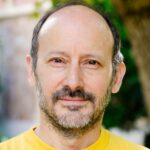Link to Pubmed [PMID] – 9302565
Histol. Histopathol. 1997 Oct;12(4):1027-38
Cellular microbiology has recently been described as a new discipline emerging at the interface between cell biology and microbiology (Cossart et al., 1996). Many microbial pathogens can enter eukaryotic cells and live intracellularly either inside vacuoles or in the cytoplasm. The different steps during the invasion process are on the way of being dissected at the molecular level revealing new insights in basic cellular functions. Indeed, bacterial pathogenesis can help us to better understand the dynamics of cell cytoskeleton, intracellular membrane traffic and signal transduction events. The recent advancements in the field of microbial pathogenesis are creating a new cross-talk between cell biologists, microbiologists and immunologists. In this review, the different strategies used by several pathogens are presented and the mechanisms elaborated by host cells from the immune system to eliminate the parasites discussed.
